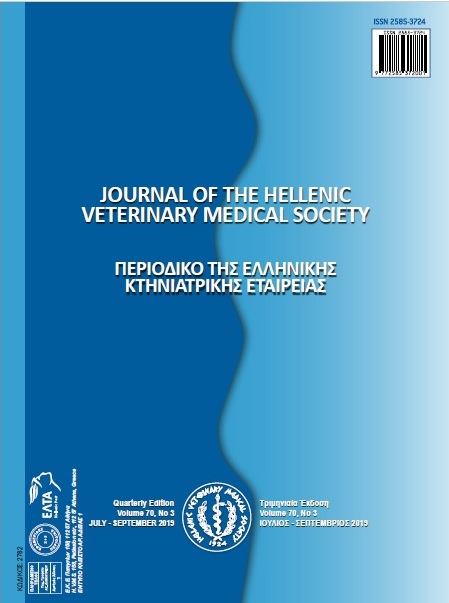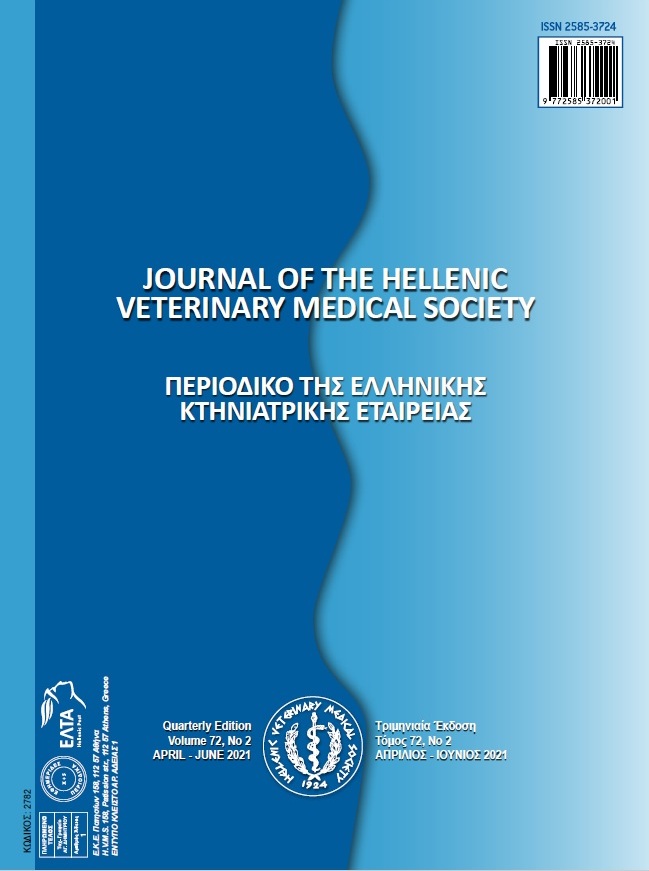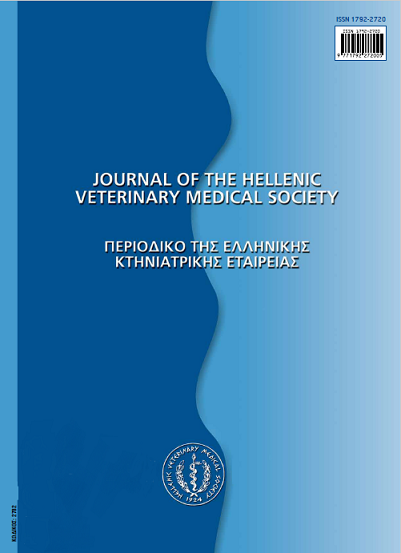Caudal cruciate ligament avulsion at its origin in a dog

Abstract
Caudal cruciate ligament (CaCL) rupture is uncommon in dogs and usually occurs with a concurrent rupture of the cranial cruciate ligament (CrCL). A 10-month-old cross-bred dog was presented with left hind limb lameness. Orthopaedic examination revealed positive craniocaudal drawer sign in the left stifle. Arthrotomy confirmed CrCL rupture, and showed CaCL avulsion fracture at its origin. The stifle was stabilized using extracapsular lateral fabellotibial suture. Eight months postoperatively the dog was free of obvious lameness and remained sound until the last re-evaluation (3 years). This case raises the possibility that restoration of the CaCL function is not always essential for animals’ successful outcome.
Article Details
- How to Cite
-
KRYSTALLI, A., PRASSINOS, N., & MANTIS, P. (2019). Caudal cruciate ligament avulsion at its origin in a dog. Journal of the Hellenic Veterinary Medical Society, 70(3), 1733–1736. https://doi.org/10.12681/jhvms.21803
- Issue
- Vol. 70 No. 3 (2019)
- Section
- Case Report

This work is licensed under a Creative Commons Attribution-NonCommercial 4.0 International License.
Authors who publish with this journal agree to the following terms:
· Authors retain copyright and grant the journal right of first publication with the work simultaneously licensed under a Creative Commons Attribution Non-Commercial License that allows others to share the work with an acknowledgement of the work's authorship and initial publication in this journal.
· Authors are able to enter into separate, additional contractual arrangements for the non-exclusive distribution of the journal's published version of the work (e.g. post it to an institutional repository or publish it in a book), with an acknowledgement of its initial publication in this journal.
· Authors are permitted and encouraged to post their work online (preferably in institutional repositories or on their website) prior to and during the submission process, as it can lead to productive exchanges, as well as earlier and greater citation of published work.




